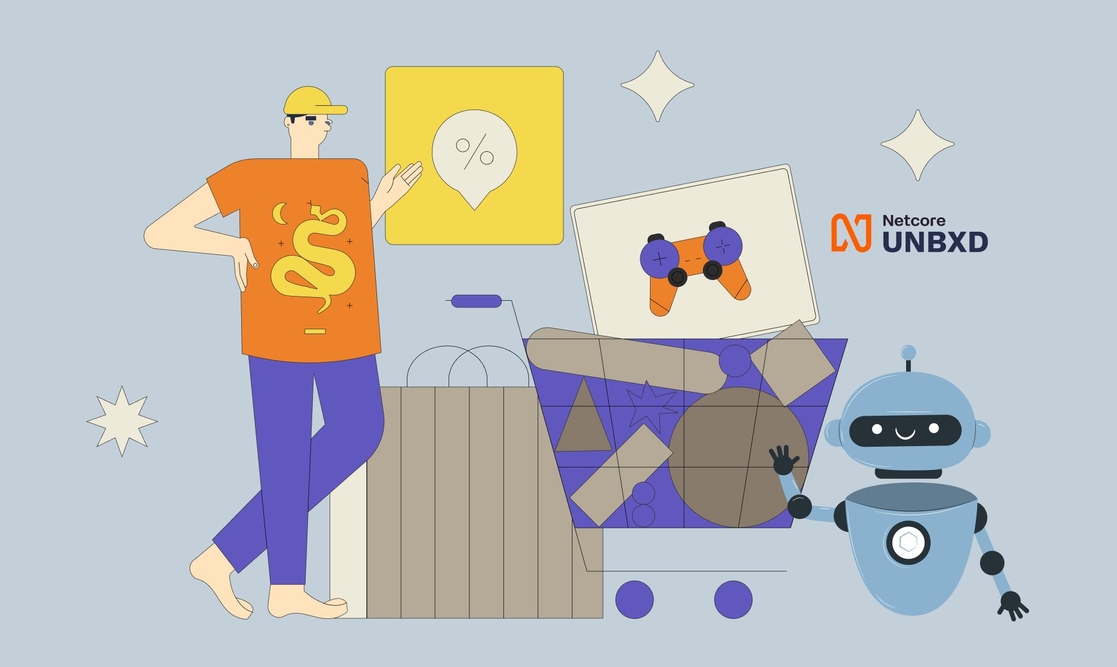- ProductsSearch and BrowseRecommendations
- Solutions
- Integrations


More traffic, and more customers, mean more conversions for retailers- overall, COVID-19 has been suitable for the eCommerce industry. But, with more customers comes a mammoth task. Retailers need to have a stellar product discovery and smooth as butter customer experience. This needs to be combined with an overall change in brand strategy to ensure customers are served as and how they want to be served.
However, for retailers, this objective becomes insurmountable when you look at the scale, requiring high staff hours and resources. Plus, it brings with it the unavoidable scope of human error. We live in a digital world, which allows each human error made by a brand to be magnified to an extent where the actual brand's value is lost.
AI is how you solve this at scale, at a lesser expensive cost. So retailers, there you go!
Last week, we partnered with Retail Global to discuss the very same with some of the top retailers in Australia and New Zealand. We were also accompanied by Kookai, one of Unbxd's top customers and the world's leading fashion label! The discussion flowed from various aspects of ecommerce and the relevance of AI for ecommerce, proving it to be insightful for a vast audience.
Acquiring a new customer is a mammoth task and is, of course, a costly affair. Keeping that in mind, customers must spend more on a single order and return for repeats. Primarily speaking, the increase in AOV and frequency of orders need to be a critical metric that needs to be tracked and continuously improved.
To make this a possibility, social media is a critical weapon in the arsenal of today's ecommerce brands. It allows customers to see content created by the brand, generating awareness about the products available and increasing a sense of connectivity and engagement. Most importantly, brands can inspire customer loyalty, enabling repeat orders from the same customer. Instagram and, most recently, Facebook groups have been beneficial for retailers in achieving this.
A discussion about increasing brand loyalty and AOV and CLTV cannot be accomplished without touching upon customer experience. As soon as a custom converts, brands must delight at every step of the customer journey to ensure that the customer becomes loyal to them. After all, retaining a customer is so much cheaper than acquiring a totally new customer.
Personalization cannot be excluded when we talk about creating seamless and delightful customer experiences. Personalization is essential, and for that to be a possibility, more and more customer data needs to be analyzed. Data signals from the customer's behavior on the store website and general internet behaviors must be collected and analyzed to identify high-affinity groups.
Merchandising is really useful in achieving this, but traditionally it has been a labor-intensive process with a lot of effort put in manually burying, pinning, boosting, and deleting products combined with overall inventory management. As a result, manually writing ranking scripts and merchandising becomes impossible at scale. For this, AI has been taking center stage of late. It helps build relevant personalization with effective merchandising to make the process more time and labor efficient – basically automated and, more importantly, more user-centric.
A better AI requires regular and intensive feeding using user data. A 360-degree data view that tracks the customer journey from website visits, in-store visits, and checkouts to trace precise behavior patterns in the lead-up to a sale becomes key. This also enables the retailer to better picture the customer journey.
Retailers need to upgrade their CSM and ABM tools, move beyond website analytics, and focus on product analytics. It's not enough to know what the customer is doing on your website, but also you need to zoom into the product level. For example, why is one product outselling others? Why does a particular product have a high cart abandonment rate? Which price range products have the highest frequency of orders?
Engagement, measurement, and building closed-loop feedback with this data is essential and has become a crucial, fast-tracked project for most retailers to permeate a seamless customer experience.
With such a strong focus on AI, most retailers fear it will hamper the human element central to effective merchandising. Ultimately, it boils down to the fact that retailers selling to customers are humans dealing with humans. It's all about the customer. The brands' top-level strategy and core values need to stem from humans, leaving AI to do what it does best – execution and compliance with processes.
Tools should not be treated as a band-aid but should stem from a core decision. For example, Tech should always work on enhancing CX, not creating it.
_Watch the On-Demand Webinar where Kookai talks about its experience with Unbxd's AI-Powered product discovery solution in shaping customer experiences. The webinar was organized by Retail Global.
Kookai was initially founded in 1983 and launched in Australia in 1992. Today with more than 200 stores across Europe, Asia, Australia, and New Zealand – it is deploying Unbxd's solution to power the on-site search and conversions._